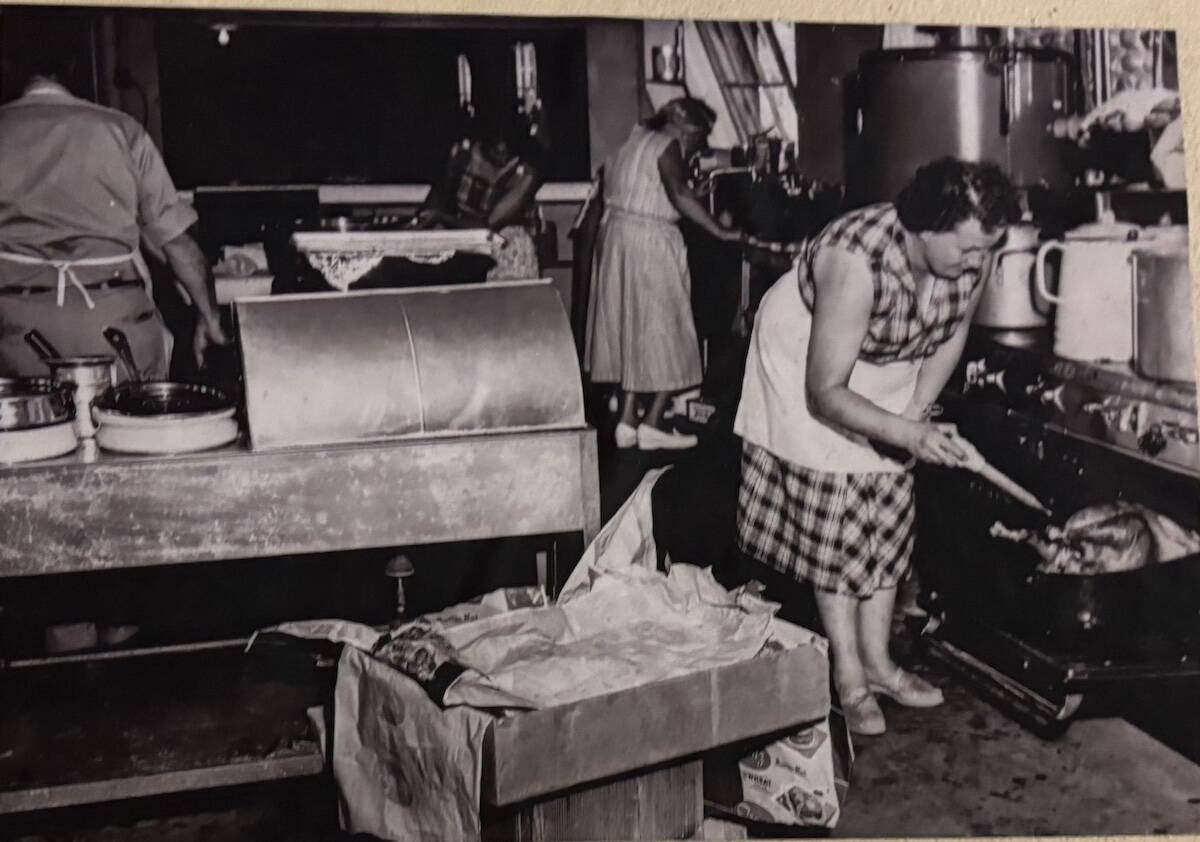By KATE POSS
Whidbey Island Fair, originally called the Island County Fair, was officially established in 1923. The annual community and agriculture showcase was cancelled twice in the years since then — once for World War II and a second time for the COVID pandemic — which means this year marks the 100th fair.
Yet the winding path that leads to the popular, hot-weather event begins even further back.
Settlers on Whidbey Island held the first county fair in Coupeville from 1912 to 1916, but discontinued the event due to the difficulty of navigating island’s unpaved roads and lack of financial support. In those days, prizes were awarded in categories that are strange to us today — such as best corset covers and fudge aprons.
By 1917, another county fair was held at a dance pavilion where the current Langley marina now hosts visiting watercraft. By this time the automobile replaced the horse and buggies. The Whidby II ferried cars to and from the mainland before abandoning the route and merging with the Clinton ferry in 1929.
Once again, local nabobs rallied to put the fair on.
According to the South Whidbey History Museum’s website, “To get the fair started, J.C. Langley, town banker and nephew of the town namesake James Weston Langley, announced that all the women who agreed to provide an exhibit would be eligible to hunt for a gold coin he dropped somewhere on his farm.”
Whether a lucky woman found the gold piece remains a mystery. In the meantime, Standard Oil bought the property in 1921, demolished the dance pavilion and installed oil tanks. Fairgrounds were formed at the fair’s current location on Cascade Avenue, originally at the school, which is now the South Whidbey Community Center. Fair exhibits were initially displayed in the school gym until it burned down in 1942.
By 1923, the Island County Fair Association became a nonprofit and permanent fair buildings were eventually erected. The fair has thrived in the years since then, except for being shuttered twice.
The ethos of competition, recognition and improved farming practices was behind the formation of the Island County Fair — now known as the Whidbey Island Fair and run by the Port of South Whidbey.
Historian Lorna Cherry wrote in a late August 1984 article of the South Whidbey Record: “Nine public spirited men who signed the incorporating papers for the Island County Fair … had a sound idea. They understood that every normal human being has a need for recognition from his fellow men and a homespun county fair is the best way for ordinary people to gain extra-ordinary honors.”
While the fair was held at school buildings at first, the Great Depression actually provided a boon for funding construction of a fair building, which remains to this day. President Franklin Roosevelt’s innovative back-to-work program, the Works Progress Administration, funded a range of infrastructure and other projects throughout the nation.
In The Record, Cherry wrote that the Fair Association purchased a 6-acre chicken ranch adjacent to the school property for $300 and began construction in 1936.
“A pole building, reported to be the largest of its kind in the United States, and all the materials, except the hard maple flooring, were from Whidbey Island,” she wrote. “Local farmers, fishermen and lumbermen, unemployed because of the Depression, worked under the direction of WPA Zone Engineer W.P. Covey and at the peak of construction 28 men were employed.”
Additional land was purchased for the fair. Horse barns, livestock buildings and exhibit halls were built from the 1940s through the 1960s.
Island County took over management of the fair in the 1960s. According to the Whidbey Island Fair history webpage: “In 1962, the Fair Association deeded the fairgrounds property to Island County with the stipulation that the land could never be sold without a majority vote of the descendants of the South Whidbey pioneer families who built it with their own funds and sweat equity, as represented by voters within the South Whidbey School District boundaries.”
The Port of South Whidbey assumed stewardship of the fairgrounds in 2017. The transfer of ownership from Island County to the Port was finalized after voters approved the takeover and an associated maintenance and operation levy which nets about $200,000 a year. Along with rental income from more than 50 tenants who use the event center during the year, except during fair days — with two tenants granted the right to remain during the fair — the Port received $230,038 in rent income and taxpayer revenue in 2023.
This year, the Whidbey Island Fair celebrates a century of hosting fairs at its current location.
Fair Manager Nancy Thelan is running the fair for a second year, after her friend and former Fair Manager Carol Coble retired from the post in 2023. Thelan calmly manages the tasks necessary of putting on the four-day affair , which includes booking entertainment, hiring carnival ride operators, coordinating fair superintendents and judges, managing food vendors, plus arranging for security and emergency medical technicians, ticket takers, sound men, teen clean-up volunteers, and special volunteers for the Fiddle Faddle Farm.
“We’re one of the last good old country fairs,” Thelan said. “They’re a dying thing. We’ve had our own struggles in the past and are reviving the fair. The Port has put in a ton of work, trimming and beautifying the grounds. We are bringing back a pie-eating contest on stage. We’re having a few more grounds entertainment — a magician, and a hypnotist during the day. We’re saying come out and celebrate our 100th fair.”
Coming back after debuting last year is the rodeo, hosted by Anne Madsen, a professional rodeo competitor who grew up on South Whidbey and now hosts roping clinics throughout the year. Also returning are Craig Wilder’s black-and-white draft horses. The Ferndale-based owner of the noble animals won a “Best groomed and decorated” award at the Northwest Washington Fair in May 2024. Wilder’s horses will be shown at the barn each day of the fair.
This year’s July 26th parade Grand Marshall is artist Diane Divelbess, who devoted decades as leader of the Island County Fair Association for many years, serving as the fair association president, and 16 years as exhibit superintendent of Fine Arts, among other programs, streamlining and expanded the exhibits so that the experience would be a pleasure for the artist and the viewing public alike.
Divelbess said the fair ran smoothly with the steadying force of a superintendent of superintendents, someone who knows the best practices of staging and judging the exhibits. This year Jackielynn Larsen oversees 28 open class exhibits, including animals, antiques, arts and crafts, baking, fiber arts, fine arts, food preservation, beer and wine, quilting, photography and Tilth.
Some of the exhibits will be moved to new buildings to accommodate the year-round tenants who rent from the Port, such as Whidbey Island Grown, which occupies half of the Malone Building. This year beer and wine, floral displays, food preservation and baked goods will continue their tradition of exhibiting in the Malone Building. Sewing, needlework and quilting have been moved this year to the Burrier Building.
Thelan said the entertainment on the fair’s Eva Mae Gabelein Stage located on the Midway includes local musicians Thursday July 24, a big country entertainer July 25, a ‘90s cover band on July 26, and a Beatles cover band July 27. Entertainment schedules will be available at the front gate and in the information booth located on the Midway during the fair..
Along with traditional food vendors, Thelan said she’s booked a popular booth again that won rave reviews last year.
“For all of you in love with Sweet Lips, the shaved fruit company, they are coming back,” said Thelan. “Frozen pineapple and strawberries and more delicious bowls of frozen shaved fruit.”
Meanwhile, deadline for entries in the July 26 Fair parade must be received by July 25. Judging divisions include marching units, family units, antique and classic cars, floats, motorcycles, animals, horses, pooper scoopers, ugly trucks and more.
For more information visit whidbeyislandfair.com.



